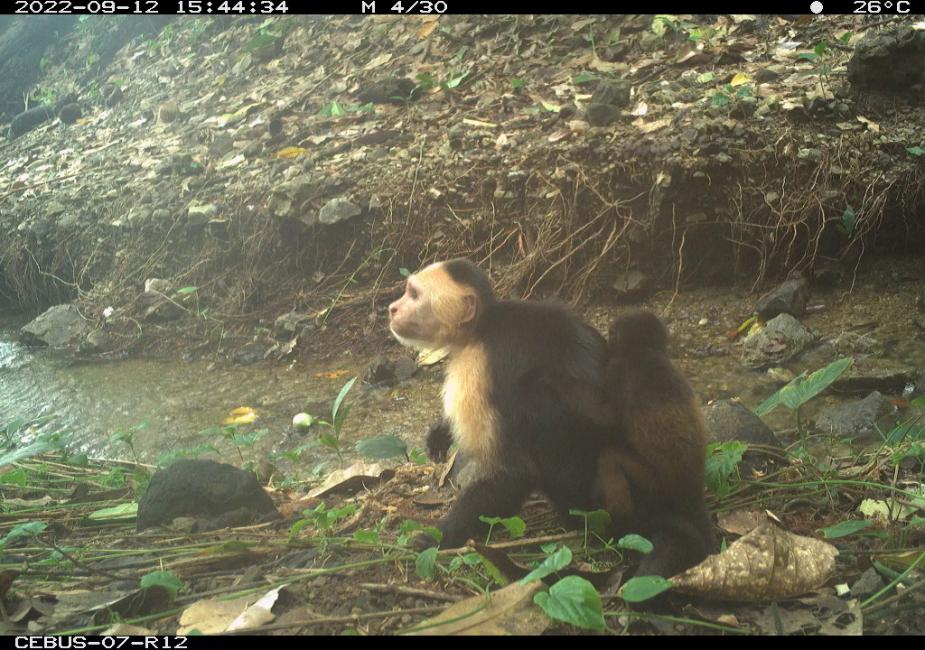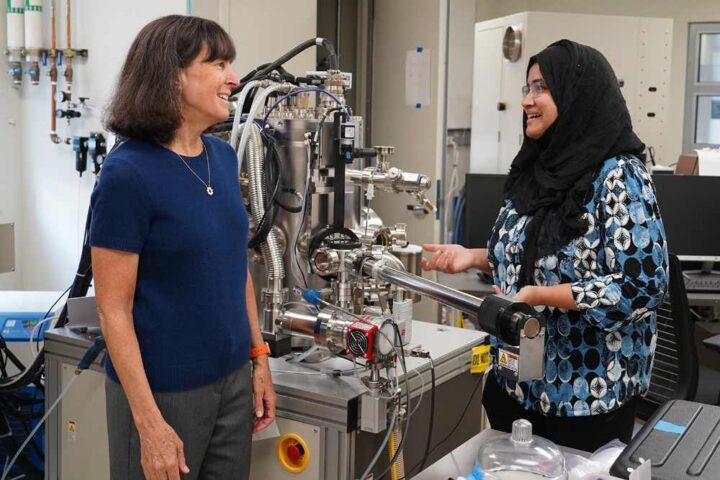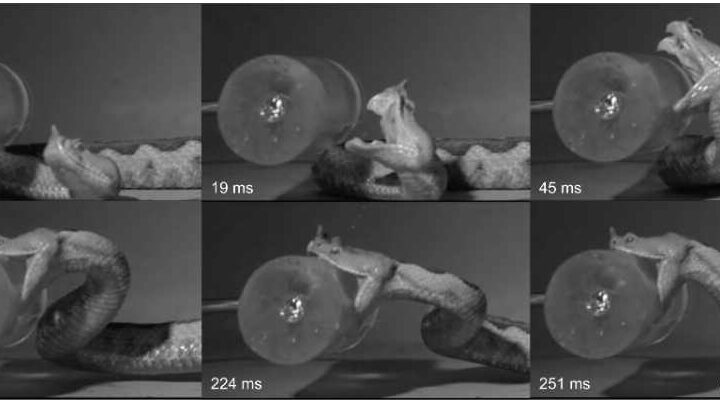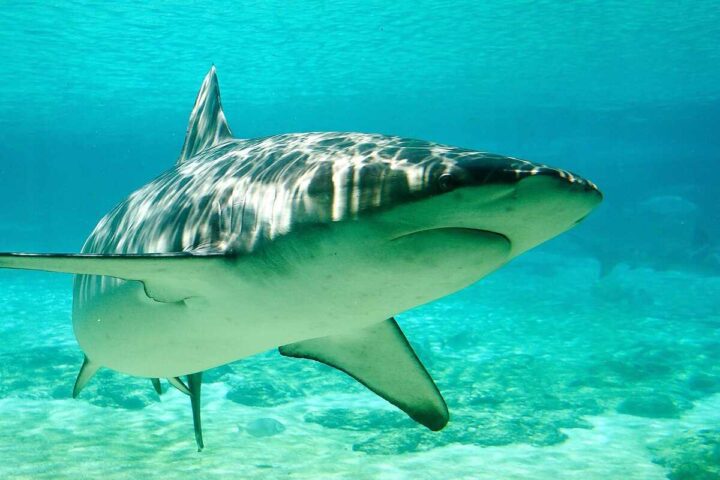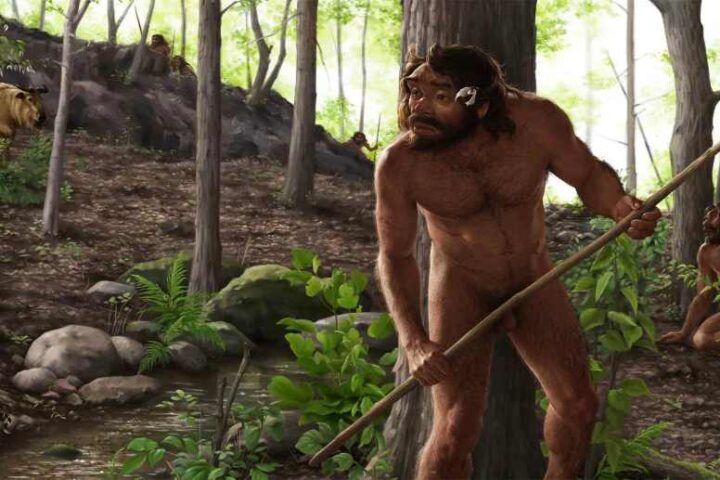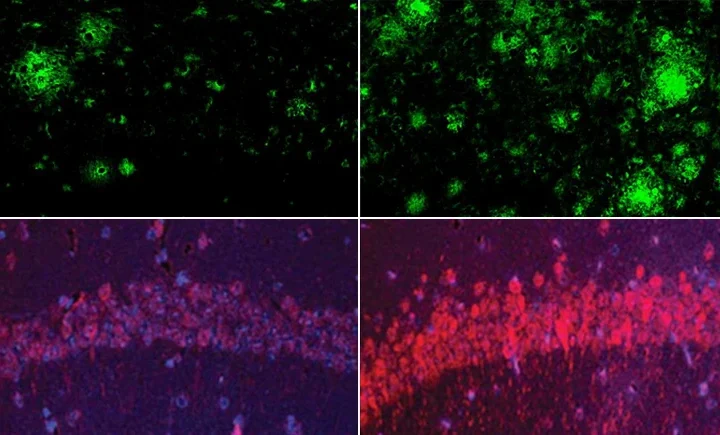Five immature male white-faced capuchin monkeys on Jicarón Island have developed a disturbing new cultural practice – repeatedly kidnapping baby howler monkeys from a neighboring endangered population. Over 85 camera traps remotely recorded the sightings, allowing scientists to pinpoint the origin and subsequent spread of this social tradition over a 15-month period. Camera trap footage spanning 15 months documented this unprecedented interspecies abduction behavior, which researchers published May 19, 2025 in Current Biology.
The unusual behavior started with a single subadult male capuchin nicknamed “Joker” for his facial scar. Between January 2022 and July 2023, Joker and four other young males carried at least 11 infant howler monkeys for periods lasting up to nine days. All abducted infants died; none survived to be released, likely from starvation.
Discovery Through Camera Surveillance
Behavioral ecologist Zoë Goldsborough from the Max Planck Institute of Animal Behavior first spotted the strange behavior while reviewing camera trap footage from Jicarón Island. “It was so weird that I went straight to my advisor’s office to ask him what it was,” Goldsborough said in a statement. The research team had placed camera traps across the island since 2017 to study the capuchins’ tool-use behaviors, with systematic monitoring using multiple camera stations throughout the study area. An interactive timeline documents the complete spread of this behavior across the 15-month observation period.
What initially appeared to be a capuchin carrying its own infant revealed itself as something unprecedented when Goldsborough noticed the baby’s different coloration. Goldsborough manually searched through tens of thousands of images and videos collected by all cameras deployed during this period, finding not one, but four different howler infants being carried by the same individual. The footage showed capuchins walking around and using stone tools while carrying baby howler monkeys clinging to their backs.
Endangered Species Under Threat
The victims belong to the Coiba Island howler monkey population (Alouatta palliata coibensis), with the global species classified as Vulnerable by the International Union for Conservation of Nature, while the Coiba Island subspecies faces additional threats due to its restricted range. Historical population surveys from 2009-2010 documented 472 individual Coiba howlers in 109 groups across Coiba Island, with an average group size of 4.3 individuals. Female howler monkeys typically give birth only once every two years, making population recovery particularly challenging.
The abducted infants ranged from just one to two days old to several weeks of age – all too young to survive without maternal milk. “Some were as young as a day or two old when taken. A few capuchins continued to carry the howler corpses around ‘like puppets or dolls,'” said Brendan Barrett, an evolutionary behavioral ecologist at the Max Planck Institute.
Social Learning and Cultural Transmission
The research team documented a clear pattern of social learning. After months of no activity, researchers discovered a series of images and videos timestamped five months later showing more howler infants being carried. Four additional young males – two subadults and two juveniles – copied the behavior over the following six months. Over the course of 15 months, these five capuchins carried 11 different howler monkeys for up to 9-day periods.
“The complete timeline tells us a fascinating story of one individual who started a random behavior, which was taken up with increasing speed by other young males,” Barrett explained. The researchers verified each case involved a different howler infant, ruling out repeated observations of the same individual.
Island Ecosystem and Predator-Free Environment
Jicarón Island, part of Panama’s Coiba National Park, provides a unique laboratory setting for studying primate behavior. The island environment lacks natural predators and offers abundant food resources for both species. The white-faced capuchins on Jicarón had already developed unique stone tool traditions for cracking nuts, seeds, crabs and coconuts – behaviors not seen in mainland populations. Interestingly, the capuchins that use tools on Jicarón are only males—just like the howler kidnappers—hinting that these two socially learned traditions might spring from the same source: boredom.
The two primate species normally coexist peacefully, occupying different ecological niches. Capuchins are omnivorous and ground-active, while howler monkeys are primarily leaf-eating arboreal specialists. “There are no predators and few competitors, which gives capuchins lots of time and little to do,” explained Margaret Crofoot, managing director at the Max Planck Institute. “This ‘luxurious’ life set the scene for these social animals to be innovators. This new tradition shows us that necessity need not be the mother of invention. For a highly intelligent monkey living in a safe, perhaps even under-stimulating environment, boredom and free time might be sufficient.”
Abduction Mechanics and Evidence
While cameras captured extensive footage of capuchins carrying howler babies, they never recorded the actual moment of abduction. Researchers believe the kidnappings occurred in the forest canopy where howlers spend most of their time.
Audio recordings provided crucial evidence confirming these were genuine abductions rather than adoptions of abandoned infants. The team found footage of howler infants making “lost” calls while adult howlers called from trees, presumably searching for their babies, while capuchins threatened the adult howlers.
Similar Posts
Expert Perspectives on Motivation
Researchers propose several explanations for this behavior. The leading hypothesis centers on environmental boredom and misdirected caregiving instincts. “They’re just doing it for the sake of doing it, to reduce their boredom or have something to do to fill the time and space in their lives,” Barrett suggested.
Susan Perry, a primatologist at UCLA not involved in the research, noted similarities to known capuchin behaviors. Perry has documented that male capuchins engage in alloparenting behaviors with capuchin infants, suggesting the howler abductions may represent misdirected caregiving behavior directed at the wrong species.
Historical Context and Comparison
This marks the first documented case of systematic interspecies infant abduction in wild primates. The only previous recorded example of cross-species care occurred in Brazil in 2004, when female capuchins successfully raised a baby marmoset to adulthood. However, that case involved lactating females capable of providing milk, unlike the Jicarón males.
Conservation Implications
The behavior raises serious conservation concerns for the already vulnerable howler population. With the small population documented in historical surveys and slow reproductive rates, continued infant losses could accelerate population decline. “If the behavior spreads to other capuchin groups or continues to impact howlers, which are an endangered species on Jicarón, it could become a conservation issue in Coiba National Park,“ researchers warned.
The study team archived comprehensive camera trap footage and behavioral coding data through the Max Planck Institute’s Edmond repository, making the complete dataset publicly available for further research. An interactive online module visualizes individual sightings and tracks the behavior’s spread across time and space.
Research Methodology and Verification
The research employed systematic camera trap monitoring since 2017, with the specific abduction study period documented from January 2022 to July 2023. The camera network generated tens of thousands of video clips over multiple years. Lisa Corewyn from Ithaca College confirmed each victim as a unique howler infant through morphological analysis, excluding the possibility of repeated observations.
The study represents a collaboration between the Max Planck Institute of Animal Behavior, University of Konstanz, Smithsonian Tropical Research Institute, and Ithaca College. Lead author Zoë Goldsborough conducted the research as part of her doctoral dissertation at the Max Planck Institute.
Cultural Traditions Without Function
The research provides insights into how non-adaptive cultural traditions emerge in intelligent social animals. “We show that non-human animals also have the capacity to evolve cultural traditions without clear functions but with destructive outcomes for the world around them,” Barrett stated.
The behaviour parallels human cultural phenomena and other documented animal fads, such as killer whales wearing “salmon hats” or chimpanzees inserting grass in their ears like accessories. However, unlike these relatively harmless behaviors, the capuchin tradition has lethal consequences for an endangered species. The males don’t eat the infants, they don’t play with them, and they don’t receive more attention from their group mates while carrying an infant.
Ongoing Monitoring and Future Research
“Witnessing the spread of this behavior had a profound effect on all of us. We therefore feel even more responsible to keep learning from this natural population of primates who, to our knowledge, are the only ones on earth to be practicing this strange tradition,” Crofoot stated.

The research team continues monitoring both species to track whether the abduction behavior persists, spreads to other groups, or eventually disappears. Understanding the dynamics of non-adaptive cultural transmission could provide insights into how arbitrary traditions emerge and spread in intelligent social animals.
The complete study, titled “Rise and spread of a social tradition of interspecies abduction,“ appears in Current Biology volume 35, issue 10, pages R375-R376, with DOI: 10.1016/j.cub.2025.03.056. The research documentation includes camera trap data spanning five years of continuous monitoring on Jicarón Island, providing an unprecedented window into the emergence and spread of novel cultural behaviors in wild primates
